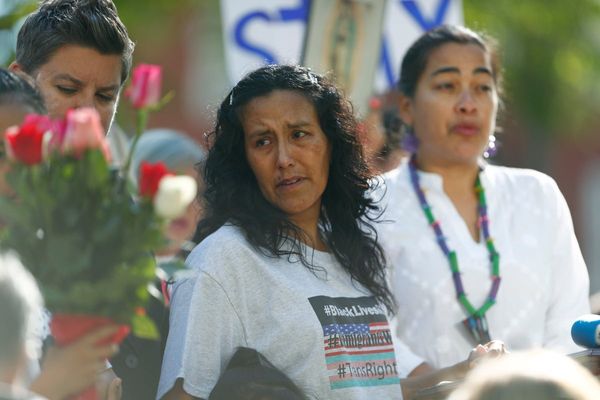
An influential Centers for Disease Control and Prevention (CDC) committee has announced new recommendations for the combined measles, mumps, rubella and varicella (MMRV) vaccine.
The members of the committee, called the Advisory Committee on Immunization Practices (ACIP), was recently changed under the leadership of Department of Health and Human Services Secretary (HHS) Robert F. Kennedy Jr. All 17 previous members were removed and then replaced with a new group, which includes several prominent anti-vaccine advocates.
The ACIP is meeting Thursday and Friday (Sept. 18 and 19) to discuss the COVID-19 vaccines; the hepatitis B vaccine; and the combined measles, mumps, rubella, varicella (MMRV) vaccine. They will also discuss recommendations regarding respiratory syncytial virus (RSV), which has a vaccine available to adults and an antibody treatment available to kids.
As of Thursday at 5:30 p.m. ET, the committee had so far voted on only the MMRV vaccine, CBS reported. In a vote of 8 to 3, with one abstention, the members voted to say that the combined MMRV vaccine is not recommended before age 4. Instead, they are recommending that this age group be given the MMR shot — which guards against measles, mumps and rubella — and the varicella shot, which protects against chickenpox, as two separate injections.
This latter option — sometimes known by the shorthand MMR+V — was already the option recommended for kids under 4. It's just that the ACIP is moving to take the MMRV option off the table for many children.
Previously, the CDC's recommendations stated that, at 12 to 15 months old, children can either get one MMRV shot or one MMR shot along with the chickenpox vaccine. The MMRV shot comes with a slightly higher risk of febrile seizures in 12- to 15-month-olds, compared with getting the MMR and varicella vaccines separately, so the latter option is preferred and recommended for that age group.
Related: RFK's handpicked advisers are coming for the childhood vaccine schedule. Here's what to know.
However, the previous guidelines allowed caregivers to choose to give their kids the MMRV shot. They might opt for that if they wanted to reduce the number of total shots given at their child's appointment, for instance. Doctors helped caregivers weigh the risks and benefits of the two options. Although scary for kids and their caregivers, febrile seizures are fairly rare, typically harmless and quick to resolve, and the MMRV raises the risk of the events by a small degree.
Following their first dose of either the MMRV or the MMR+V, kids get a second dose at age 4 to 6. At that age, both options come equally recommended, so it comes down to preference and availability.
At Thursday's ACIP meeting, some experts argued that recommending only the MMR+V option for kids 12 to 15 months old takes away a choice from caregivers, and could also have implications for how government insurers cover the shots, CBS reported. Others noted that the increased seizure risk is small, has been known about for nearly 20 years, and is discussed with caregivers as a standard of care. Presenters at the meeting also noted that, currently, 85% of caregivers opt for separate shots for their kids, while 15% choose the combo MMRV option, independent health journalist Liz Szabo reported.
The ACIP's recommendations are important in part because they determine which shots are included under the Vaccines for Children (VFC) program, for which about half of children in the U.S. are eligible. Kids covered by the program include those who are uninsured and underinsured; on or eligible for Medicaid; or are American Indian or Alaska Native.
There was some apparent confusion among the ACIP members about the VFC program, Medscape reported.
On Thursday, the ACIP committee voted on whether the MMRV should no longer be covered for under-4s in the program, to bring its coverage in line with their new recommendation. The members rejected making any change, with some abstaining because they said they weren't sure what they were voting for. But on Friday, the vote was reopened and the members voted to change the VCP coverage so MMRV is no longer covered for that age group, CNN reported.
The committee's recommendations must be reviewed and approved by the CDC director to become official guidance, but the director most often approves the recommendations.
Meanwhile, America's Health Insurance Plans (AHIP), a trade group of private insurers, announced in a statement on Sept. 16 that insurers would continue to cover vaccines that were recommended as of Sept. 1, 2025, until at least the end of 2026.
The ACIP also discussed the hepatitis B vaccine Thursday but has moved to delay their vote about the shot. The committee plans to both discuss and vote on the COVID-19 vaccine recommendations Friday.
Following leadership changes at HHS and CDC, the American Academy of Pediatrics issued its own recommended child and teen immunization schedule and said it would not endorse the recommendations of the CDC.
Editor's note: This story was updated on Sept. 19, 2025, at 10:50 a.m. ET to note that the ACIP twice voted on their VFC recommendations, flip-flopping their decision in doing so.
This article is for informational purposes only and is not meant to offer medical advice.







